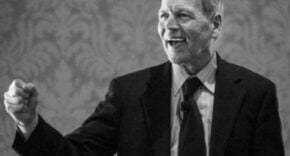After a few days away in the mountains, with barely any internet or news, I found it refreshing to escape the constant political bickering that can dominate our thoughts. Honestly, I don’t feel like I missed much; the dream of a kinder, gentler political landscape remains just that—a dream. The same hype surrounds the financial markets, which is why long-term investors like Warren Buffett ignore quarterly reports and focus on the long haul.
Now, all eyes are on the Federal Reserve’s September meeting and how any rate decision might impact the upcoming election. Depending on your political leanings, economic claims are either fact, fiction, or a mix of both. A rate change by the Fed could sway the election, tipping the scales for either Trump or Harris, as economic issues are top of mind for many Americans. While the Fed is quasi-governmental and claims no political allegiance, its decisions inevitably influence political outcomes.
Perception is everything. A rate cut in September would likely be touted by Harris and the Democrats as a sign of economic recovery, benefiting consumers with lower interest rates and inflation. Conversely, the absence of a rate cut could be used to argue that the economy is still struggling, with high rates and inflation hurting everyday Americans. Currently, the financial markets anticipate a rate cut in September, which bolsters the incumbent party’s position.
Fed Chairman Jerome Powell must balance clear communication of policy with a non-partisan stance. Powell recently emphasized that any decision made before, during, or after the election would be data-driven, not politically motivated. The Fed has been aggressive in combating inflation, raising rates to a two-decade high of around 5.3% in July 2023. While the stock market has been volatile with Fed discussions, the bond market anticipates multiple rate cuts this year. However, any rate decision in September is unlikely to have an immediate impact on professional markets but will affect consumers more directly. Only actual rate cuts will bring credit relief to consumers, with lower lending rates for mortgages, credit cards, and more.
The next Fed meeting on Sept. 17-18, followed by one right after the Nov. 5 election, leaves little time for action before voters head to the polls. The Trump camp argues that waiting a month or so wouldn’t harm the long-term outlook, with former Treasury economist Michael Faulkender cautioning against pre-election rate cuts that could damage the Fed’s credibility. Democrats, however, push for immediate rate reductions to ease consumer burdens and support a soft economic landing. Bharat Ramamurti, a former White House economic aide, argues that the strong recovery needs sustained support to avoid stumbling at the finish line. Senator Elizabeth Warren has also urged Chairman Powell to cut rates now to avoid being perceived as a partisan tool.
This isn’t the Fed’s first election-timed dilemma. Similar situations occurred in 1992 with President George H.W. Bush, where rate cuts didn’t prevent his election loss. Powell and the Fed are in a tough spot, with one side inevitably displeased by the outcome.









